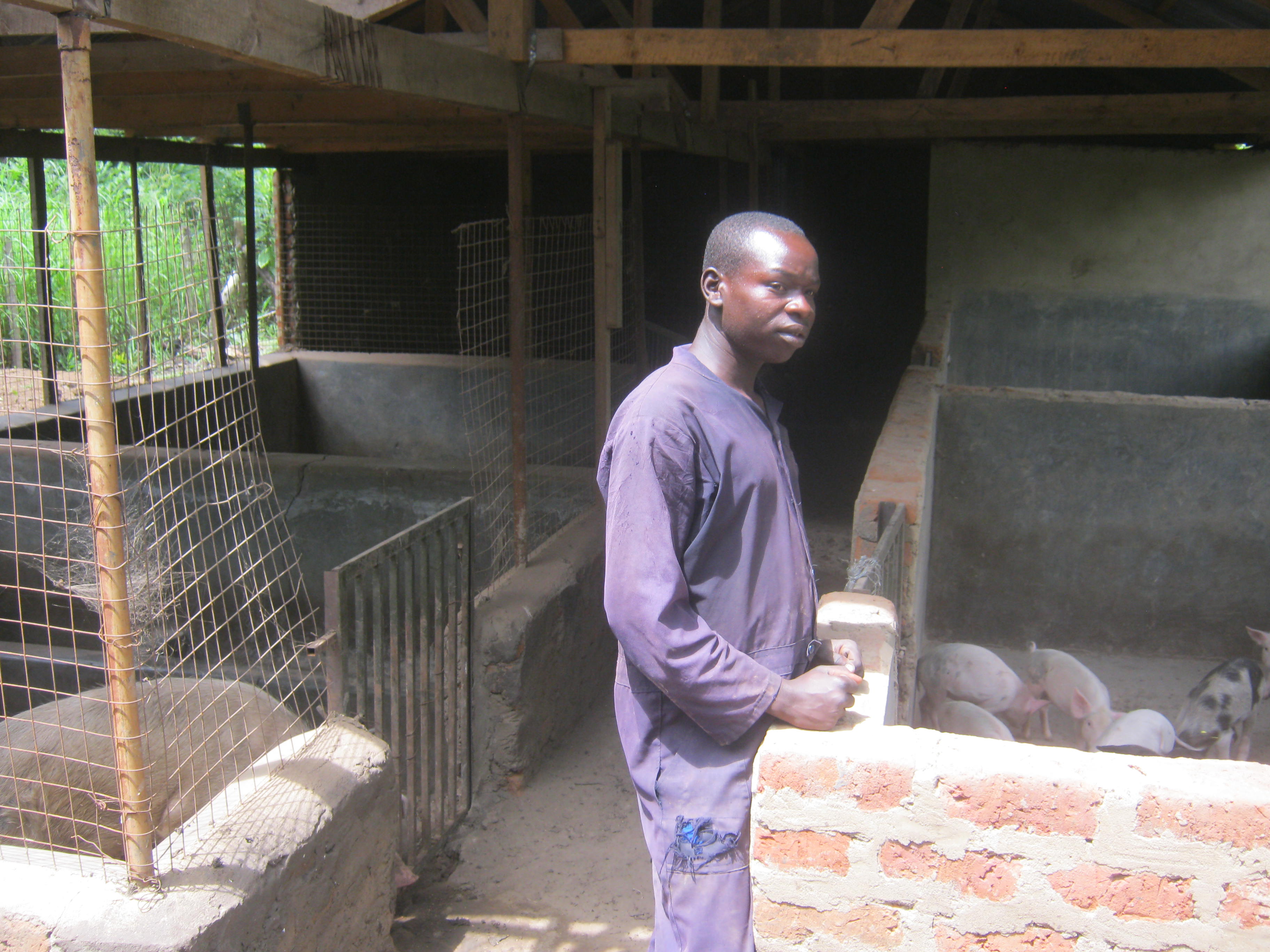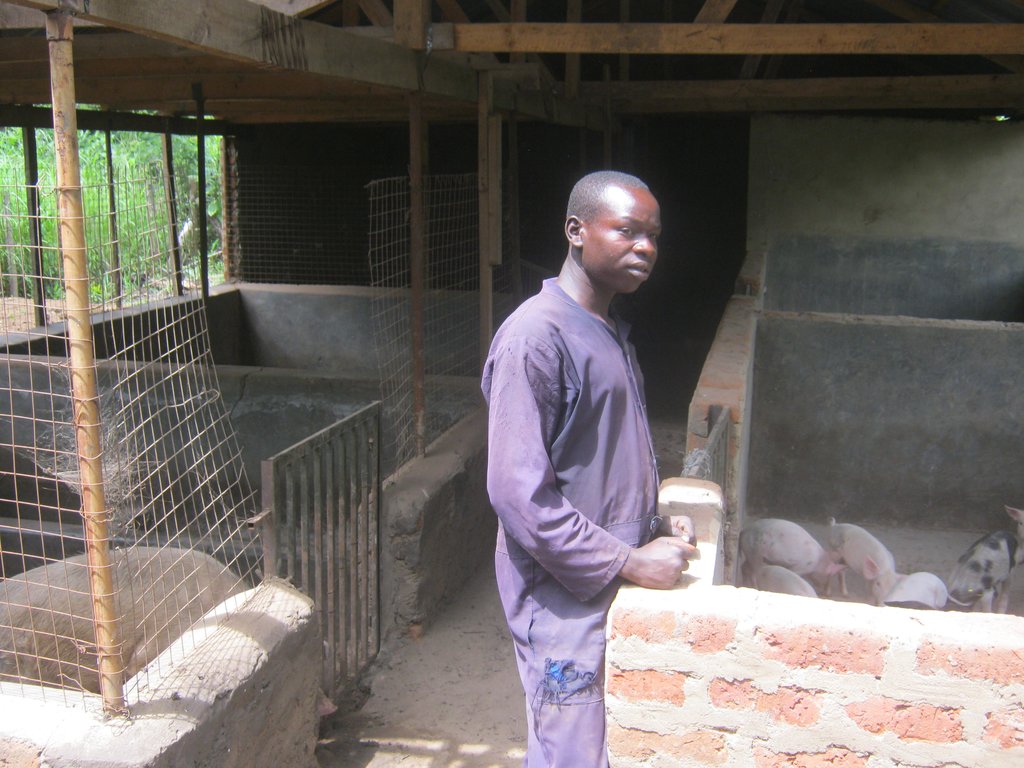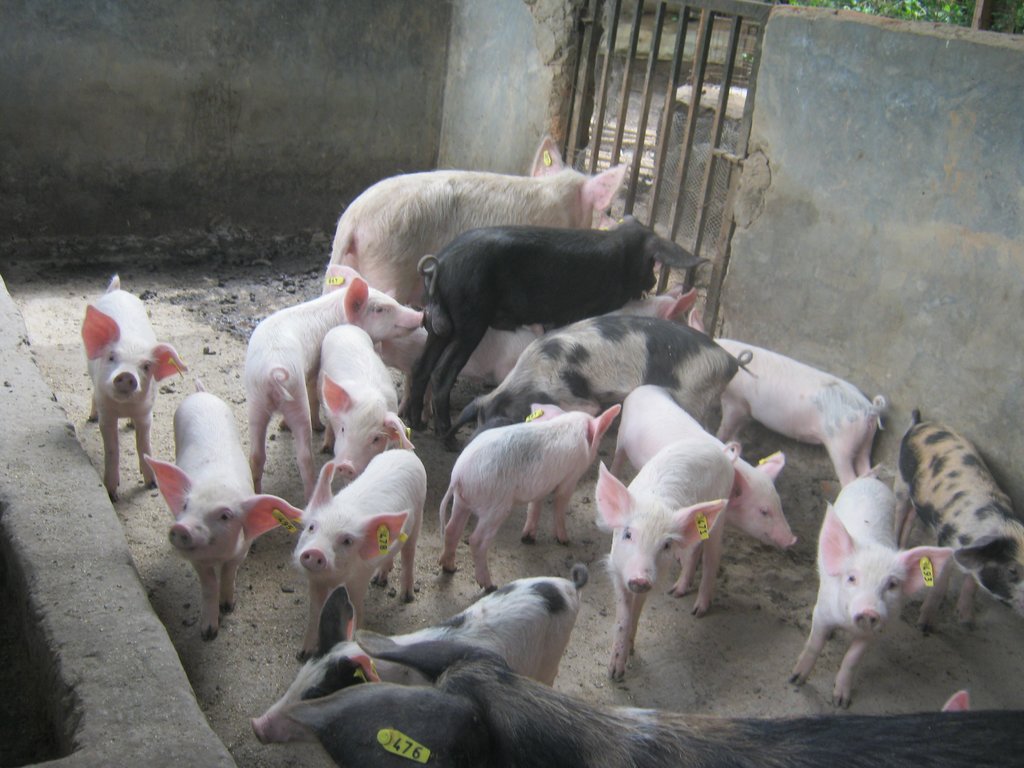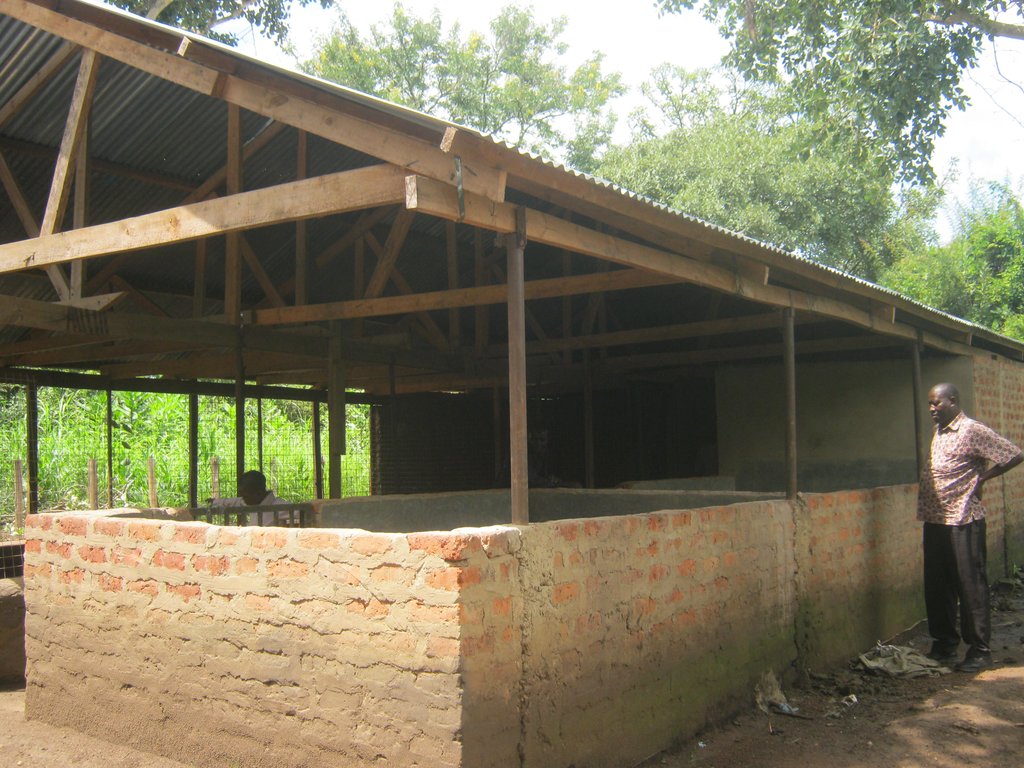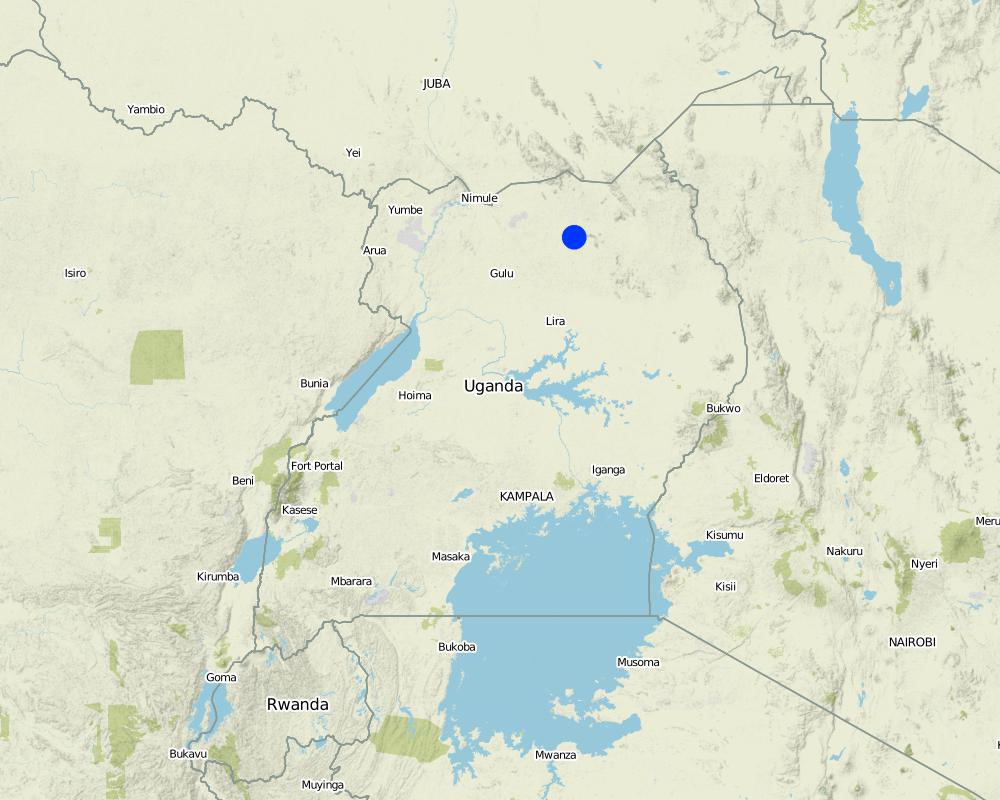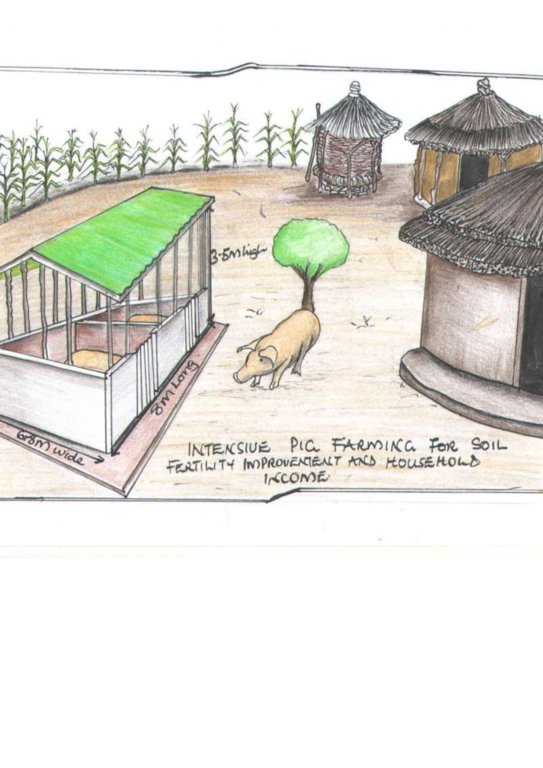Intensive Pig farming for soil fertility improvement and household income [Uganda]
- Creation:
- Update:
- Compiler: Kamugisha Rick Nelson
- Editors: JOY TUKAHIRWA, Sunday Balla Amale, Richard Otto Kawawa, Bernard Fungo
- Reviewers: Donia Mühlematter, Drake Mubiru, Nicole Harari, Renate Fleiner
Gwoko Opego Kidyang Pi Yubu Moc can
technologies_2812 - Uganda
View sections
Expand all Collapse all1. General information
1.2 Contact details of resource persons and institutions involved in the assessment and documentation of the Technology
Key resource person(s)
land user:
Pito Alex
Farmer
Uganda
Name of project which facilitated the documentation/ evaluation of the Technology (if relevant)
Scaling-up SLM practices by smallholder farmers (IFAD)Name of the institution(s) which facilitated the documentation/ evaluation of the Technology (if relevant)
CDE Centre for Development and Environment (CDE Centre for Development and Environment) - Switzerland1.3 Conditions regarding the use of data documented through WOCAT
The compiler and key resource person(s) accept the conditions regarding the use of data documented through WOCAT:
Yes
1.4 Declaration on sustainability of the described Technology
Is the Technology described here problematic with regard to land degradation, so that it cannot be declared a sustainable land management technology?
No
2. Description of the SLM Technology
2.1 Short description of the Technology
Definition of the Technology:
Pigs are kept to produce manure used for soil fertility improvement and household income.
2.2 Detailed description of the Technology
Description:
Pig farming has become a popular and lucrative business among farmers in Northern Uganda. It is considered to be a quick means of improving soil fertility and household incomes, thus improving land productivity and reducing poverty.
Pigs are normally fed reguraly on maize bran purchased or maize grain produced as the most common food ration but could also benefit from having a ratio with protein from soybeans produced on farm, and home-made feeds mainly in the form of cassava, brew waste and potatoes as well as adequate supply of drinking water for purposes of fattening, animal manure and income provision.
10-12 pigs are kept in a pen measuring 6 to 8 m wide, 8 m long and 3.5 m high with a space for feeding and bedding. The materials needed for constructing the pen are iron sheets, wood, and nails. Sanitation in pig farming is important in order to keep the pigs disease-free. Therefore, a mechanism for easy cleaning and removal of waste is necessary for any type of pig housing using sawdust. The farmer uses simple local brooms, basins, and buckets to clean and remove manure on a daily basis and applied in nearby gardens
After five to seven months, pigs are likely to have attained an ideal market weight of more than 70 – 100kg. The farmer may decide to sell or slaughter for meat. Compared to most livestock species, pigs have a higher turnover rate due to a shorter gestation period in addition to providing manure which the farmer applies on the gardens to increase soil fertility for increased food production. Pigs also have higher returns on investment due to a larger litter size and higher feed conversion ratio. These factors make pig farming a more profitable livestock enterprise, since more meat is produced and sold in a shorter period, relative to other domestic animals.
However, the farmer needs to be aware that pigs are easily attacked by bacteria and virus related diseases, which result into diarrhoea, leading to death. Treatment requires high-level skills, which may need the attention of an extension worker to provide advisory services and treatment in case they fall sick.
2.3 Photos of the Technology
2.4 Videos of the Technology
Comments, short description:
Video showing intensive goat and pig farming tethered for manure.
Date:
10/05/2017
Location:
Akobi Parish, Kitgum District
Name of videographer:
Issa Aiga
2.5 Country/ region/ locations where the Technology has been applied and which are covered by this assessment
Country:
Uganda
Region/ State/ Province:
Northern Region,Uganda
Specify the spread of the Technology:
- applied at specific points/ concentrated on a small area
Comments:
Map showing technology site in Northern Uganda.
Map
×2.6 Date of implementation
Indicate year of implementation:
2015
If precise year is not known, indicate approximate date:
- less than 10 years ago (recently)
2.7 Introduction of the Technology
Specify how the Technology was introduced:
- through land users' innovation
- through projects/ external interventions
Comments (type of project, etc.):
Started as a Model farmer under National Agricultural Advisory services (NAADS).
3. Classification of the SLM Technology
3.1 Main purpose(s) of the Technology
- improve production
- reduce, prevent, restore land degradation
- adapt to climate change/ extremes and its impacts
- create beneficial economic impact
- Improve learning with the community on tithered livestock mangement for manure
3.4 Water supply
Water supply for the land on which the Technology is applied:
- rainfed
Comments:
Have two rainy season. November to December and March to May.
3.5 SLM group to which the Technology belongs
- integrated crop-livestock management
- integrated soil fertility management
- Piggery
3.6 SLM measures comprising the Technology

agronomic measures
- A2: Organic matter/ soil fertility
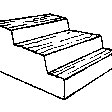
structural measures
- S9: Shelters for plants and animals
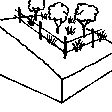
management measures
- M6: Waste management (recycling, re-use or reduce)
Comments:
Pigs provide manure which is applied on maize field to increase production. Maize corn is fed to Pigs.
3.7 Main types of land degradation addressed by the Technology
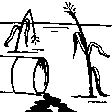
chemical soil deterioration
- Cn: fertility decline and reduced organic matter content (not caused by erosion)

biological degradation
- Bc: reduction of vegetation cover
3.8 Prevention, reduction, or restoration of land degradation
Specify the goal of the Technology with regard to land degradation:
- prevent land degradation
- restore/ rehabilitate severely degraded land
Comments:
Through use and application of manure from the tethered animals.
4. Technical specifications, implementation activities, inputs, and costs
4.1 Technical drawing of the Technology
4.2 General information regarding the calculation of inputs and costs
Specify how costs and inputs were calculated:
- per Technology area
Indicate size and area unit:
less than 0.05 acre, 6 to 8 m wide, 8 m long and 3.5 m high
other/ national currency (specify):
UGX
If relevant, indicate exchange rate from USD to local currency (e.g. 1 USD = 79.9 Brazilian Real): 1 USD =:
3400.0
Indicate average wage cost of hired labour per day:
7000
4.3 Establishment activities
| Activity | Timing (season) | |
|---|---|---|
| 1. | Select site where to put pigs | Once before establishment |
| 2. | Build a pen for pigs | Once before establishment |
| 3. | Look for inputs | Once during estabslsihment/ routine |
| 4. | Purchase pigs | Once during establsihment |
| 5. | Put pigs in the pen | Once during establlsihment |
| 6. | Feedding pigs | Daily |
| 7. | Watering pigs | Daily |
| 8. | Spraying pigs | Weekly |
4.4 Costs and inputs needed for establishment
| Specify input | Unit | Quantity | Costs per Unit | Total costs per input | % of costs borne by land users | |
|---|---|---|---|---|---|---|
| Labour | Persons days on monthly basis | persons | 4.0 | 210000.0 | 840000.0 | 100.0 |
| Equipment | Nails | kgs | 10.0 | 2500.0 | 25000.0 | 100.0 |
| Equipment | Hoes | Pieces | 1.0 | 10000.0 | 10000.0 | 100.0 |
| Equipment | Spade | Pieces | 1.0 | 10000.0 | 10000.0 | 100.0 |
| Equipment | Wheel barrow | Pieces | 1.0 | 75000.0 | 75000.0 | 100.0 |
| Equipment | Iron sheets | pieces | 6.0 | 20000.0 | 120000.0 | 100.0 |
| Fertilizers and biocides | Pestcide | litres | 5.0 | 15000.0 | 75000.0 | |
| Construction material | Poles | Pieces | 20.0 | 5000.0 | 100000.0 | 100.0 |
| Construction material | wood | pieces | 15.0 | 5000.0 | 75000.0 | 100.0 |
| Other | Feeds on weekly basis | kgs | 100.0 | 3000.0 | 300000.0 | 100.0 |
| Total costs for establishment of the Technology | 1630000.0 | |||||
Comments:
Labour costs are high during estabslishment and it is reduced over time.
4.5 Maintenance/ recurrent activities
| Activity | Timing/ frequency | |
|---|---|---|
| 1. | Cleaning and removing manure | Daily |
| 2. | Giving drinking water to pigs | Daily |
| 3. | Spraying the pigs | Weekly |
| 4. | Feeding the pigs | Daily |
| 5. | Manure application in the field to improve soil fertility | Weekly |
4.6 Costs and inputs needed for maintenance/ recurrent activities (per year)
| Specify input | Unit | Quantity | Costs per Unit | Total costs per input | % of costs borne by land users | |
|---|---|---|---|---|---|---|
| Labour | persons days on monthly basis | persons | 4.0 | 210000.0 | 840000.0 | 100.0 |
| Labour | 100.0 | |||||
| Total costs for maintenance of the Technology | 840000.0 | |||||
Comments:
High costs of labour because its routine compared to costs of equipment which are purchased during establishment.
4.7 Most important factors affecting the costs
Describe the most determinate factors affecting the costs:
Labour takes most of the costs because its required regularly during establishment and maintenance.
5. Natural and human environment
5.1 Climate
Annual rainfall
- < 250 mm
- 251-500 mm
- 501-750 mm
- 751-1,000 mm
- 1,001-1,500 mm
- 1,501-2,000 mm
- 2,001-3,000 mm
- 3,001-4,000 mm
- > 4,000 mm
Specify average annual rainfall (if known), in mm:
1200.00
Specifications/ comments on rainfall:
Two rainy seasons.
Agro-climatic zone
- humid
5.2 Topography
Slopes on average:
- flat (0-2%)
- gentle (3-5%)
- moderate (6-10%)
- rolling (11-15%)
- hilly (16-30%)
- steep (31-60%)
- very steep (>60%)
Landforms:
- plateau/plains
- ridges
- mountain slopes
- hill slopes
- footslopes
- valley floors
Altitudinal zone:
- 0-100 m a.s.l.
- 101-500 m a.s.l.
- 501-1,000 m a.s.l.
- 1,001-1,500 m a.s.l.
- 1,501-2,000 m a.s.l.
- 2,001-2,500 m a.s.l.
- 2,501-3,000 m a.s.l.
- 3,001-4,000 m a.s.l.
- > 4,000 m a.s.l.
Indicate if the Technology is specifically applied in:
- concave situations
5.3 Soils
Soil depth on average:
- very shallow (0-20 cm)
- shallow (21-50 cm)
- moderately deep (51-80 cm)
- deep (81-120 cm)
- very deep (> 120 cm)
Soil texture (topsoil):
- medium (loamy, silty)
Soil texture (> 20 cm below surface):
- medium (loamy, silty)
Topsoil organic matter:
- medium (1-3%)
5.4 Water availability and quality
Ground water table:
< 5 m
Availability of surface water:
good
Water quality (untreated):
good drinking water
Is water salinity a problem?
No
Is flooding of the area occurring?
No
5.5 Biodiversity
Species diversity:
- low
Habitat diversity:
- medium
5.6 Characteristics of land users applying the Technology
Sedentary or nomadic:
- Sedentary
Market orientation of production system:
- mixed (subsistence/ commercial)
Off-farm income:
- less than 10% of all income
Relative level of wealth:
- average
Individuals or groups:
- individual/ household
Level of mechanization:
- manual work
Gender:
- men
Age of land users:
- youth
- middle-aged
5.7 Average area of land used by land users applying the Technology
- < 0.5 ha
- 0.5-1 ha
- 1-2 ha
- 2-5 ha
- 5-15 ha
- 15-50 ha
- 50-100 ha
- 100-500 ha
- 500-1,000 ha
- 1,000-10,000 ha
- > 10,000 ha
Is this considered small-, medium- or large-scale (referring to local context)?
- medium-scale
5.8 Land ownership, land use rights, and water use rights
Land ownership:
- individual, not titled
Land use rights:
- communal (organized)
Water use rights:
- open access (unorganized)
5.9 Access to services and infrastructure
health:
- poor
- moderate
- good
education:
- poor
- moderate
- good
technical assistance:
- poor
- moderate
- good
employment (e.g. off-farm):
- poor
- moderate
- good
markets:
- poor
- moderate
- good
energy:
- poor
- moderate
- good
roads and transport:
- poor
- moderate
- good
drinking water and sanitation:
- poor
- moderate
- good
financial services:
- poor
- moderate
- good
6. Impacts and concluding statements
6.1 On-site impacts the Technology has shown
Socio-economic impacts
Production
crop production
Quantity before SLM:
0
Quantity after SLM:
250kgs
Comments/ specify:
Manure application on the maize field to improve soil fertility.
crop quality
Comments/ specify:
Especially maize.
fodder production
Comments/ specify:
For feeding the pigs.
animal production
Comments/ specify:
Good feeding/purchase after sell of maize.
land management
Comments/ specify:
manure application.
Water availability and quality
drinking water quality
water quality for livestock
Quantity before SLM:
0
Quantity after SLM:
1 water harvesting tank
Comments/ specify:
to be used for drinking by the pigs.
Income and costs
expenses on agricultural inputs
Comments/ specify:
Spend on pesticides.
farm income
Quantity before SLM:
0
Quantity after SLM:
800000
Comments/ specify:
sale of maize and 2 pigs.
workload
Comments/ specify:
Looking after pigs and maize on farm.
Socio-cultural impacts
food security/ self-sufficiency
Comments/ specify:
Especially with the harvest of maize.
SLM/ land degradation knowledge
Comments/ specify:
Training on planting maize, feeding the pigs and manure application in the maize field.
Ecological impacts
Soil
soil cover
Comments/ specify:
Animal manure application in the maize field.
soil loss
Comments/ specify:
Zero grazing avoiding overgrazing.
soil organic matter/ below ground C
Comments/ specify:
Due to application of manure.
Biodiversity: vegetation, animals
Vegetation cover
Comments/ specify:
Zero grazing.
beneficial species
Comments/ specify:
Pigs.
pest/ disease control
Comments/ specify:
Support from extension workers.
6.2 Off-site impacts the Technology has shown
damage on neighbours' fields
Comments/ specify:
Zero grazing as pigs are destructive.
6.3 Exposure and sensitivity of the Technology to gradual climate change and climate-related extremes/ disasters (as perceived by land users)
Gradual climate change
Gradual climate change
| Season | increase or decrease | How does the Technology cope with it? | |
|---|---|---|---|
| annual temperature | increase | moderately | |
| seasonal temperature | wet/ rainy season | increase | moderately |
6.4 Cost-benefit analysis
How do the benefits compare with the establishment costs (from land users’ perspective)?
Short-term returns:
slightly negative
Long-term returns:
positive
How do the benefits compare with the maintenance/ recurrent costs (from land users' perspective)?
Short-term returns:
slightly negative
Long-term returns:
slightly positive
Comments:
Short term- High costs on labour and inputs.
Long term - Low costs required only for labour to maintain the technology.
6.5 Adoption of the Technology
- 11-50%
If available, quantify (no. of households and/ or area covered):
5
Of all those who have adopted the Technology, how many did so spontaneously, i.e. without receiving any material incentives/ payments?
- 51-90%
6.6 Adaptation
Has the Technology been modified recently to adapt to changing conditions?
Yes
If yes, indicate to which changing conditions it was adapted:
- climatic change/ extremes
Specify adaptation of the Technology (design, material/ species, etc.):
Planted Agroforestry trees ( avocado and calliandra) as feed supplement.
6.7 Strengths/ advantages/ opportunities of the Technology
| Strengths/ advantages/ opportunities in the land user’s view |
|---|
| Can easily be replicated in some other areas. |
| Cheap to maintain once established: require low costs for maintenance. |
| Provide manure which is applied on farm for increased maize production. |
| Strengths/ advantages/ opportunities in the compiler’s or other key resource person’s view |
|---|
| Rewarding to both small and scale land users in terms of Income from the sale of pigs. |
| Provide manure for maize production. |
6.8 Weaknesses/ disadvantages/ risks of the Technology and ways of overcoming them
| Weaknesses/ disadvantages/ risks in the land user’s view | How can they be overcome? |
|---|---|
| Expensive to feed during the dry season: costly due to shortage of feeds. | Promote alternative farm feeds on farm e.g avocado and calliandra trees. |
| Weaknesses/ disadvantages/ risks in the compiler’s or other key resource person’s view | How can they be overcome? |
|---|---|
| Easily attacked by bacteria and virus related diseases which result into constant Diarrhoea. | Improve hygiene. |
| Intensive Labour. | Use both family labour. |
| Requires some capital which may not be available with the land user who may want to start. |
Form saving and loans group/ association. Access agricultural loans for farmers and pay after sale of pigs. |
7. References and links
7.1 Methods/ sources of information
- field visits, field surveys
01
- interviews with land users
01
- interviews with SLM specialists/ experts
01
When were the data compiled (in the field)?
10/05/2017
Links and modules
Expand all Collapse allLinks
No links
Modules
No modules


